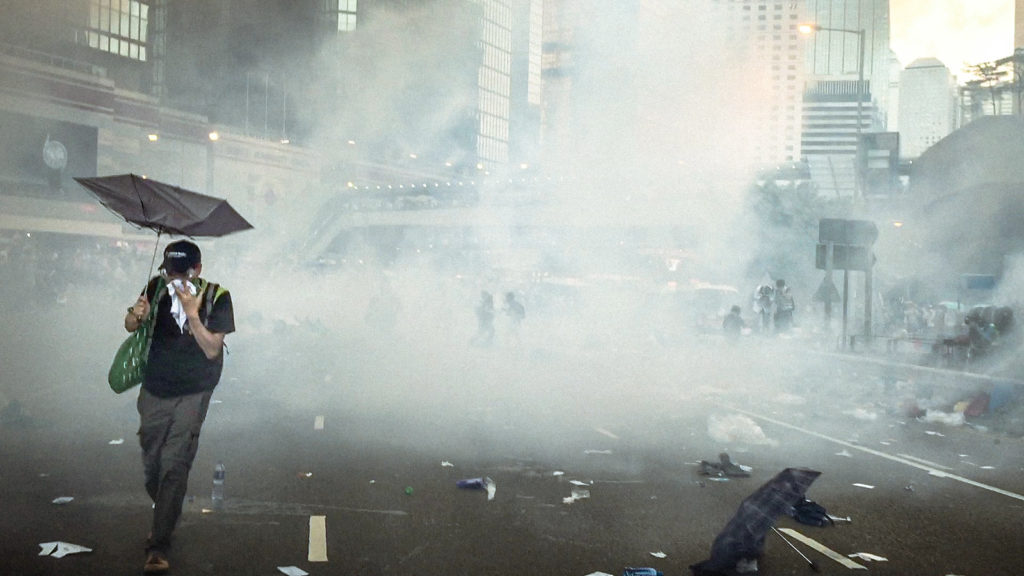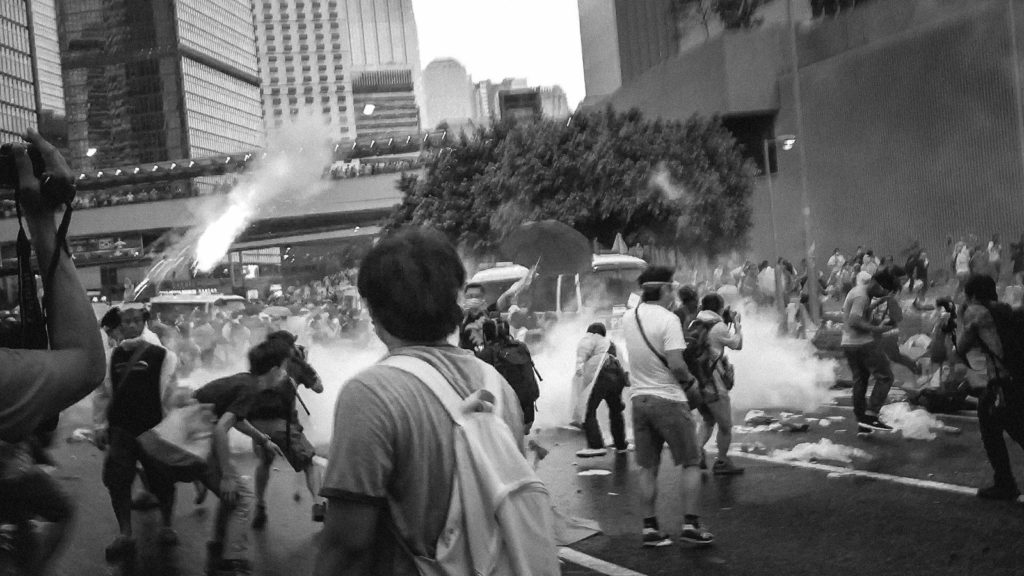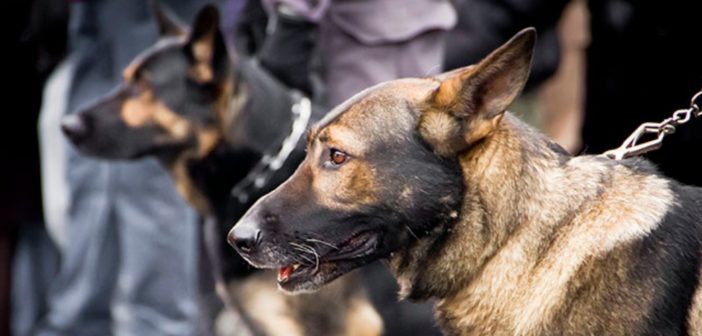During the past few months, there have been frequent demonstrations in Hong Kong by citizens, which were initiated to object to the Extradition Bill proposed by the Hong Kong Special Administrative Region (SAR) government.
The Hong Kong Police brought police dogs to the front lines of these demonstrations without giving them any protective gear. We all know that dogs are more sensitive to noise and odors than humans. Tear gas affects animals in very similar ways to humans, only more severely. The same symptoms you see in humans, you see in animals, such as excessive tearing, sneezing, and irritation to the respiratory tract, as well as pain in the eyes, nose, mouth, and lungs.

Tear gas is deployed during a 2014 protest in Hong Kong. Image credit Studio Incento, CC BY-SA 3.0.
On August 9th, 2019, according to videos and photos shared by the media, Hong Kong Police could not control their dogs or calm them down. The police dogs were barking excessively at people around them, including at police, and trying their best to run away.
Then, on August 11th, Hong Kong Police brought their dogs to the front line again and used tear gas and rubber bullets without giving the dogs any form of protective equipment. However, the police themselves were all dressed in protective gear.
Many animal lovers reported this case to different animal organisation. The Hong Kong Society for the Prevention of Cruelty to Animals (HKSPCA) has advised the Hong Kong Police of this concern twice. But the police have continued bringing their dogs to the front line. The Hong Kong government has paid no attention to this issue, and have just encouraged the police to respond to protests in whatever way they want.

Police attacking peaceful protestors in Hong Kong in 2014. Image credit Studio Umberto, CC BY-SA 3.0.
Moreover, as identified and verified by the demonstrators, the tear gas used by the Hong Kong Police was well past the expiration date. We understand that expired tear gas can actually be more toxic, as the chemical can break down into cyanide oxide, phosgenes and nitrogens. Expired canisters also have a higher risk of faulty fuses and explosions.
People choose to go to these areas, but animals shouldn’t have to. They’re innocent bystanders and have no choice in the matter. The Hong Kong Police should not force their dogs to breathe and suffer the effects of large amounts of tear gas. We hope we can do something to stop the violence and offences being committed by the Hong Kong Police, including those against their dogs.
Featured image: police dogs at the Ryan Russell funeral procession in Canada. Image credit Pete Morawski, CC BY-SA 3.0.






2 Comments
I support the plight of the citizens of Hong Kong.
I love animals with all my heart.
Seeing abused dogs fills me with a truly deep rage that drivers to my core.
That said, it is… Easily verifiable fact that Dogs (And Horses) are dramatically less susceptible to both CN gas and CS gas, the two most commonly used forms of riot gas. I’m all behind the supporting of animals, but using unresearched emotional manipulation is not the way to do it.
CS was developed and tested secretly at Porton Down in Wiltshire, UK, in the 1950s and 1960s. CS was used first on animals, then subsequently on British Army servicemen volunteers. CS has less effect on animals due to “under-developed tear-ducts and protection by fur”.